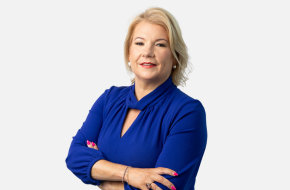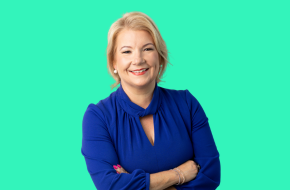By Joanne McEnteggart, Global Head of Debt, Capital Markets and Corporate
Towards the end of 2024, IQ-EQ co-hosted an industry roundtable dinner with Avardi Partners and 17Capital, where participants explored key trends in fund finance.
The dinner in London featured discussions on everything from subscription lines to the fast-growing NAV financing market, as well as emerging topics like hybrid finance and a changing fund ratings landscape.
A huge thank you to our guests for sharing their expertise in this complex and changing sector. Here’s a look at five key trends from the evening’s conversation.
1. Subscription line market recovery
After a period of slowed activity in the subscription line (subline) market, the sector is showing signs of recovery. General partners (GPs) are gaining better visibility on investor appetite, and this is expected to lead to a gradual increase in fund launches. As Guillaume Leredde, managing partner at Avardi Partners, explained: “We expect a large volume of demand in 2025. The fundraising environment is improving and there will essentially be a backlog of funds that were not launched in 2023 or 2024. Even though the banks are open for business, it will be interesting to see how the market can cope with the increased volume anticipated.” In other words, there are only so many deals legal and credit teams can handle at once. This anticipated uptick in fundraising activity follows almost two years of market uncertainty, during which limited partners (LPs) suffered from a lower level of distributions from GPs, resulting in a careful allocation of new commitments.
Fund managers are anticipating a smoother path ahead, with a predicted rise in subscription facility demand from now onwards. This comes as GPs explore financing solutions to support ongoing operations, as slow exits and delayed distributions have made liquidity management critical for both GPs and LPs. There is also discussion around the start of securitisation structures in the sublines, however this comes with (often unnecessary) fees and complexity. Participants agreed that despite the likelihood of the sublines market becoming more sophisticated from a structuring point of view, it remained a largely relationship-based market, with GPs advised to diversify their banking relationships as much as feasible.
2. NAV financing gains traction
Net asset value (NAV) financing has also emerged as an increasingly crucial tool for private equity funds. With global private equity fundraising down by more than 35% in 2023, GPs are increasingly turning to NAV financing to maintain momentum. This strategy allows funds that are already fully invested to make follow-on acquisitions and create additional value for investors by securing loans against the underlying assets in their portfolios.
David Wilson, partner at 17Capital, told the roundtable that NAV financing, when used properly, allows funds to increase their capacity without the overheads associated with a secondaries sale: “PE companies have always had numerous tools to help them optimise the performance of underlying companies,” David said. “But at the fund level – especially near the end of a cycle – there have traditionally been fewer tools available. In the current environment investors are putting more pressure on managers to make the most of the fund as an overall structure, by maximising capacity and not holding back money for things that only ‘might’ happen.” David outlined the three main uses of NAV financing, with the most common being acquisition financing, followed by capital infusion and LP distributions.
NAV financing has certainly surged, having grown by 30% in 2023, reflecting its growing importance in an otherwise constrained capital environment. 17Capital’s analysis of more than $38 billion of transactions showed 90% was allocated towards financing growth and maximising value.
3. Strong GP-LP relationships are still crucial
The relationship between GPs and LPs is becoming even more critical, particularly against a backdrop of increased NAV financing. The use of NAV facilities by PE firms in particular remains controversial within the LP community and full transparency between GPs and LPs on the uses and conditions of such financing is highly recommended – meaning that trust and communication between GPs and LPs is vital.
While there are regulatory differences and varied market scales, these types of financing tools have proven mutually beneficial, despite initial LP nervousness about the use of NAV financing to boost returns. These relationships remain crucial, especially when we consider that a vast majority of a fund’s next raise tends to come from existing investors. Some participants mentioned investors are holding back due to undeployed capital in other funds, while others are simply deferring investments to next year, preferring to hold onto cash.
4. Credit ratings play an increasingly important role
Banks are more frequently requiring funds to obtain ratings before offering substantial credit facilities. Around 15 banks now require them, driven by their desire to better manage risk and regulatory capital requirements. For funds seeking to secure large financing packages, a strong credit rating, often at least A-, is becoming increasingly helpful in unlocking competitive terms.
This emphasis does present a challenge for smaller funds (below €800m) that may struggle to meet the size, diversification and longevity requirements needed to achieve a strong rating. This can lead to a negative cycle, where smaller funds are penalised with higher costs of borrowing or are even denied access to certain types of financing altogether. Non-bank lenders can ride to the rescue here, but these lenders tend to offer more expensive financing solutions compared to traditional banks and still look for funds with strong a track record and reliable LP bases. Overall, the role of credit ratings in fund financing is set to become even more central, the group predicted.
5. Changing bank relationships and lender dynamics
Banks are becoming more adept at viewing fund finance products as a core part of their relationships with GPs. Some banks, previously hesitant to provide NAV financing or even GP facilities, are now more willing to engage due to GP demand. However, the appetite of lenders can fluctuate, and some banks are wary of complex or heavily optimised deals, due to the anticipated more stringent regulatory environment.
Banks tend to use sublines not only for financing but to build strong client relationships. This same mentality can even lead banks to reserve balance sheet space for GPs who offer them the most ancillary income, which can be a crucial advantage in a tight liquidity environment. Funds, for their part, do well to understand the strategic goals of each institution they work with and increasingly select lenders who can support their present and future needs.
The roundtable reflected an industry that is adapting and changing, with participants agreeing that while complexities abound, so too do the opportunities for those ready to seize them.










